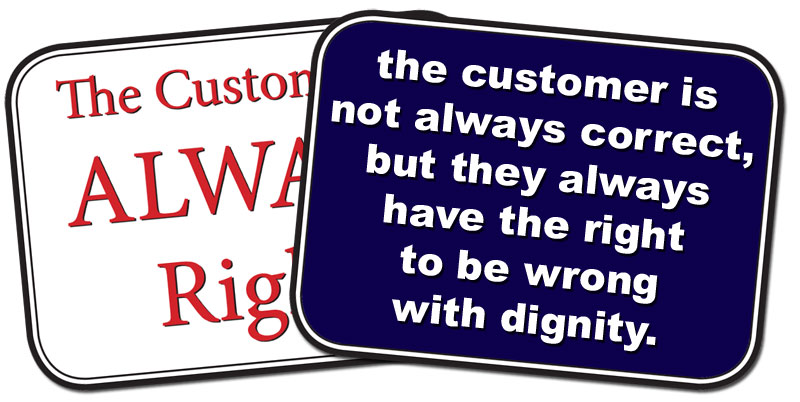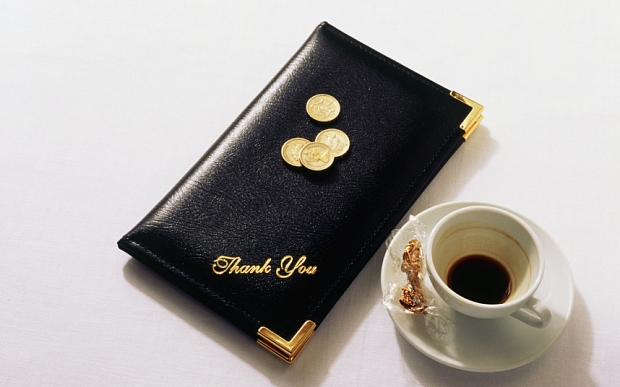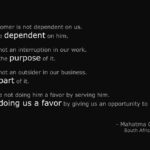There’s a very common assertion in business that “The Customer Is Always Right”. It has been hammered time and time again and is deeply ingrained in the minds of staff world over, that without fail in any corporate speaking forum when we pipe up and say “The Customer Is Always………………” RIGHT!!! is what we get right back at us. Unanimously and in choir format.
So let’s get our facts right and dig deeper and ask – really, truly, is the customer always RIGHT? Always?!
NO WAY!!!! Customers are very often in the wrong. There are very many different factors that occasion them being wrong: they forget what they have been told about products or services; they do not follow instructions as advised; they misread and misunderstand things and end up confused; they make assumptions and sometimes go off tangent; and quite a number in the search for freebies, discounts, complimentary items or concessions, decide to create a fuss for nothing. So yes, many many times, the customer is WRONG.
However, with the mentality that customers are always right, we find that many staff are completely cowed into submission, lack assertiveness, back down in complete submission and are unable to maintain their stand when confronted by customer conflict situations where the customer is actually wrong. And many, in a bid to pacify the agitated customer and calm the situation end up apologizing and deferring to the complaining customer.
And yes, whilst apologizing is indeed a much preached solution to effectively deal with angry and agitated customers, with the A in the acronym LEARN – Listen| Empathise | Apologise| Resolve| Now referring specifically to making an apology, it is important to note that blanket apologizing even when the customer is the sole cause of the problem, may lead to liability issues. When a customer complains, and the respondent is quick to say “I am sorry” or ‘I apologise”, it acts as soothing balm to the customer yes, but fuels those that have vengeful and libelous inclinations.
The Oxford English Dictionary defines the word apologize as “express regret for something that one has done wrong” with emphasis on the words regret and wrong. So If the customer is wrong or on the wrong and one apologizes, how then is it in order to express regret for doing or causing ‘nothing’?
Sorry is indeed a magic word and has served over the centuries to bring forth peace, calm, harmony and unity, and to quell the fires of wrath. It is however very important to note that to calm a situation, one should be careful to apologize for the customer’s feelings and for the situation in general (“I am so sorry you are so upset” or “I am really sorry things do not seem to be going as per your expectations” etc) and not for the actual complaint, unless without reasonable doubt the organization or individual are at fault. In which case a full blown out apology is in order and in fact expected.
So having established that the customer is not always right – what next? Well, knowledge is power, and knowing for a fact that customers are very often on the wrong, empowers staff to acknowledge to themselves that the customer is indeed wrong, and then proceed to creatively think of how to resolve the matter at hand with a win-win outcome.
Focusing on finding an amicable solution and seeing how to assist the customer despite the situation, instead of being hung up on who is right and who is wrong, will result in a favourable outcome every time. And of course the magic rule of customer service, to treat each customer with Courtesy, Dignity and Respect will produce a winning result. Always!










